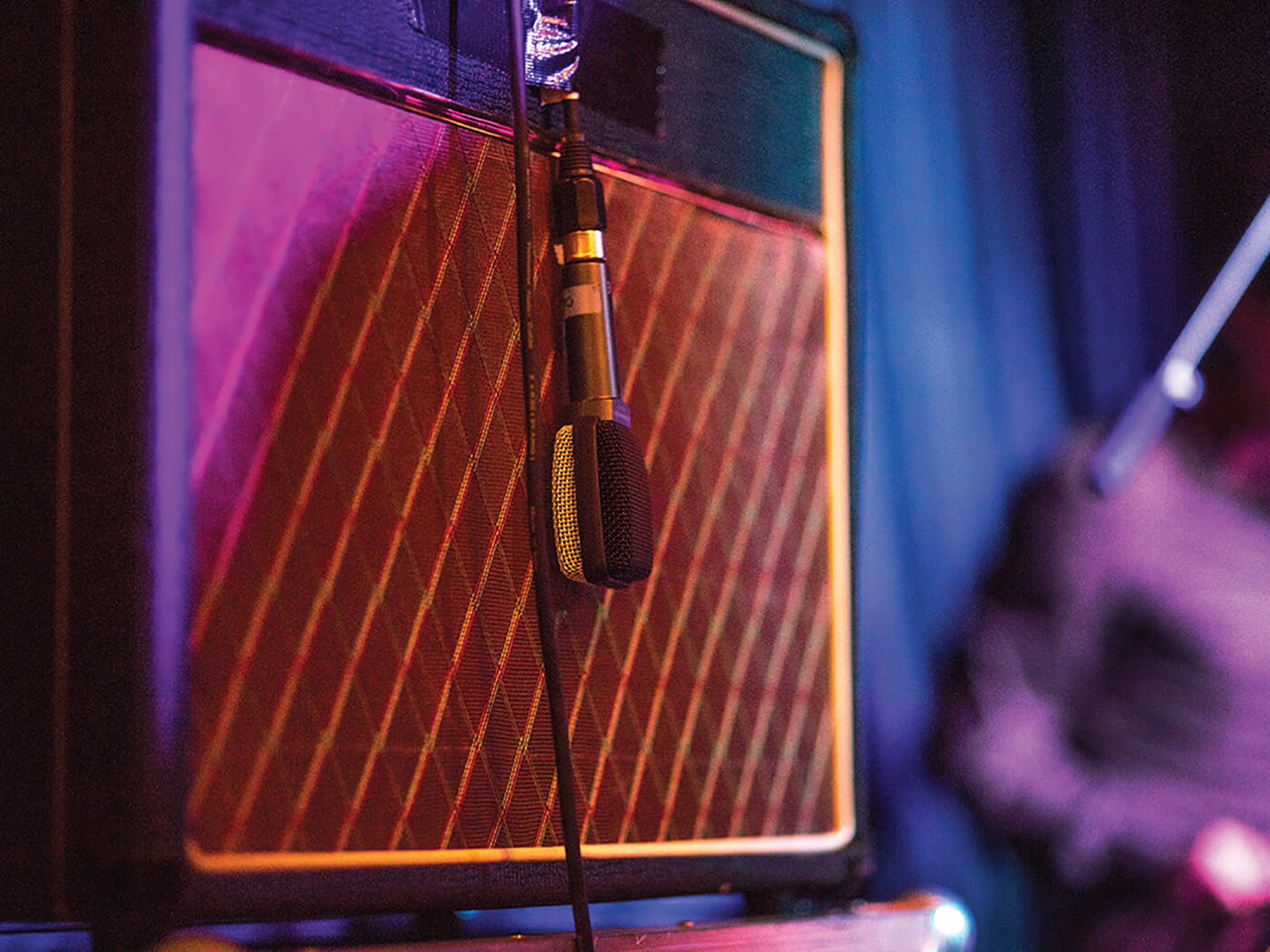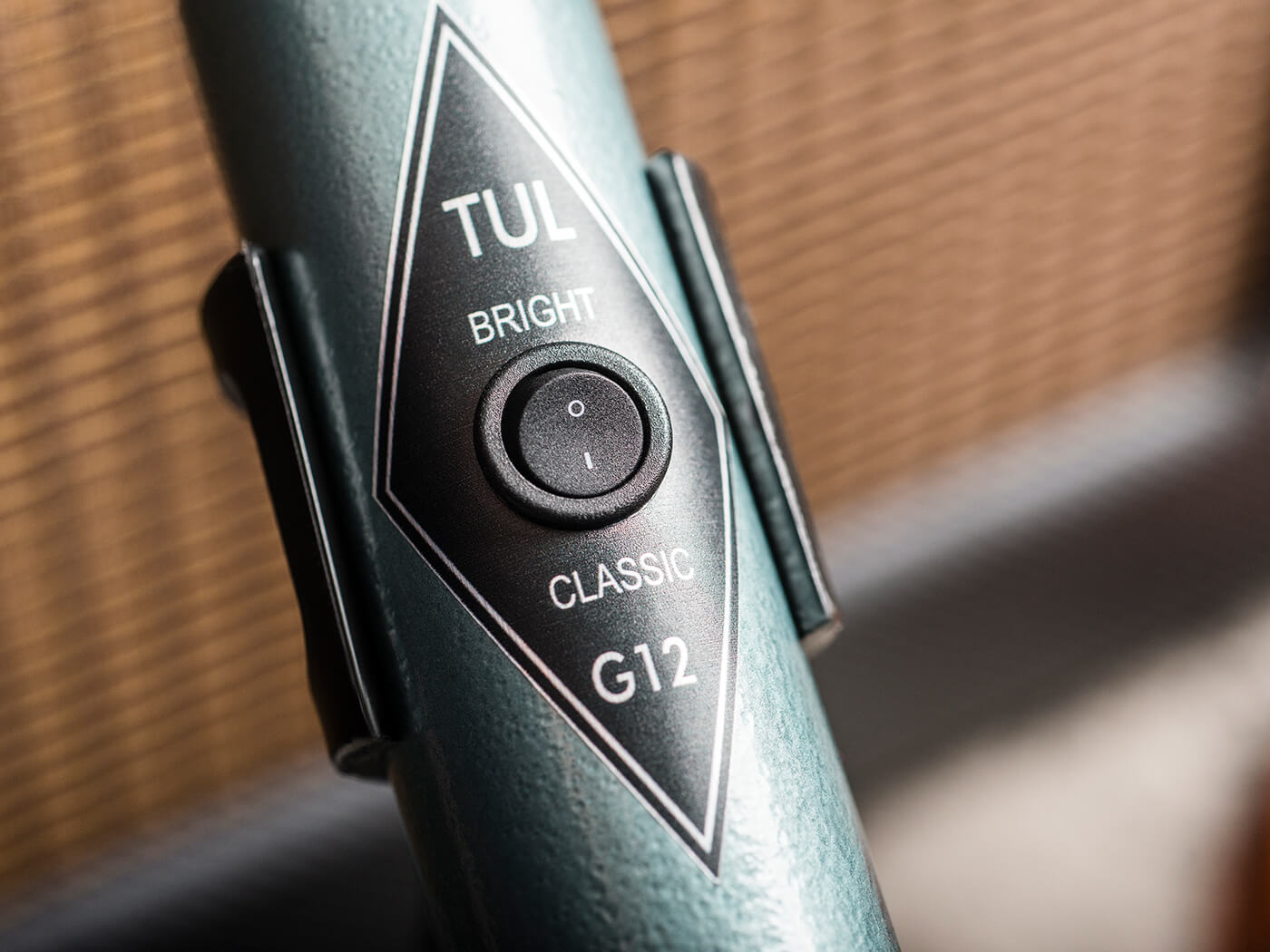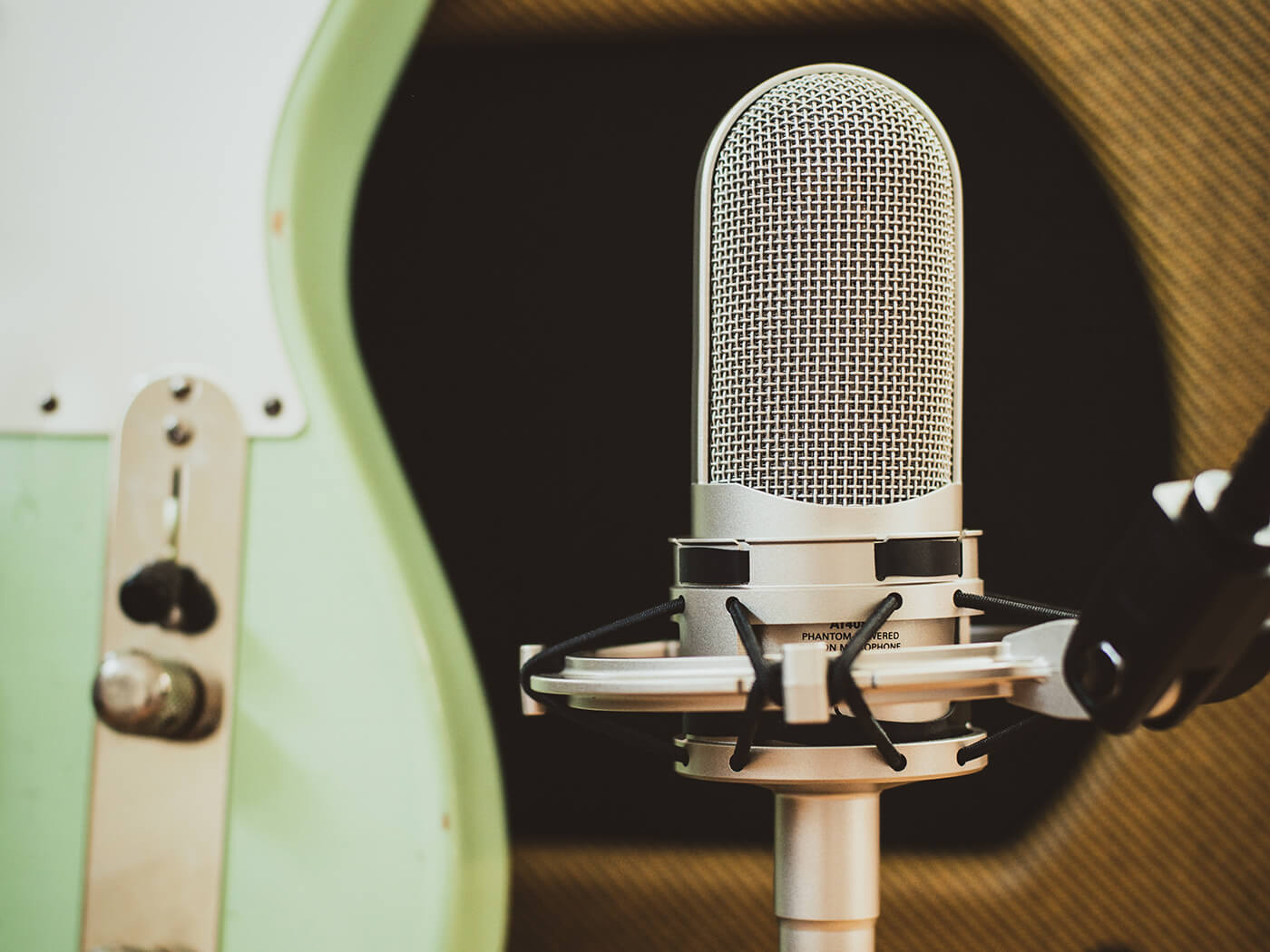For more features, click here.
Related Tags
Guitar Recording FAQ: How do I mic my guitar amplifier?
In the latest instalment of our Guitar.com recording column, we turn our attention to the dark art of cabinet mic’ing.

Hi guys, I’ve always recorded direct but I’d like to try mic’ing my amps. Do you have any tips?
– James, Corby
You’re swimming against the tide James, because most players now record direct through modelling devices, plugins or outboard gear such as the Universal Audio OX. They’re quick, easy and produce fantastic results, but we still understand why you would want to record through your amps.
There is something special about the way that electric guitars and amplifiers interact when the volume reaches a certain level in a nice acoustic environment. Sustaining feedback and blooming harmonic overtones simply aren’t part of the deal when you’re monitoring through a small pair of monitor speakers at low-to-moderate volume levels.
To answer your question, we need to discuss microphone choice and positioning. We discussed all three types of recording microphone in some detail last time around so we won’t repeat all that. But since the practicalities of recording acoustic and electric guitars are so different, the pros and cons of each microphone type need to be re-evaluated.
Moving coil

Somehow moving coil microphones – usually a Shure SM57 – became the industry standard for recording electric guitars. The reasons are lost in the mists of time because they’re not the best choice for fidelity. But technical drawbacks that may compromise their suitability in other recording scenarios, can be advantageous for electric guitar.
Moving coils are the bruisers of the microphone family. Because there are no vulnerable diaphragms or electronics to worry about, they can get up-close and personal with the loudest amps.
Most have attenuated treble and bass responses, which helps to minimise harshness and tightens up the low end. The result is a narrow focus on the midrange, and a natural push in the upper mids that captures the frequencies you need in the mix and dispenses with the sonic clutter that can obscure other instruments.
The downside is an inability to capture the true tone of your amp and speakers. Having said that, our ears have become so attuned to the way moving coils capture guitar tones that something technically ‘wrong’ actually sounds ‘right’. With a decent microphone preamp and some careful equalisation, excellent results can be achieved.
TRY THESE: Beyerdynamic M201, Sennheiser MD 421, Tul G12 Retro
Condensers

A decent condenser is almost the opposite of a moving coil, having a full frequency response and greater sensitivity. For sparkling clean tones, a condenser microphone can give you a better chance of capturing the natural tone of your amp, subtle details and playing dynamics than a moving coil. That said, if your tone isn’t that great, a condenser won’t do you any favours.
Condenser mics come in small and large capsule forms, but the latter are far more popular for electric guitar. However, high volume levels can cause distortion in the capsule and the onboard electronics. And even if the microphone is able to cope, the relatively high output level from this type of microphone can overload the microphone preamp.
Many condensers have switchable attenuation pads that can prevent distortion in the microphone and the preamp. They often have bass roll-off switches too, which helps to keep the low frequencies punchy and defined. But the best thing about condensers is that you can use them for everything.
TRY THESE: T.bone SCT 2000, Audio-Technica AT4047, Neuman TLM 193
Ribbons

Unless you are using a modern, phantom-powered ribbon mic such as the excellent Audio-Technica AT4081, one of the drawbacks of ribbon microphones is their low output level. This can make unsuitable for recording acoustic instruments – unless your microphone preamp can provide high gain levels with a very low noise floor. Fortunately, this low output level is a non-issue with loud sources such as electric guitars.
Like moving coils, ribbon microphones are usually passive devices. This means there is no onboard preamp circuitry and impedance conversion and signal splitting and balancing is handled by the output transformer.
Most engineers stopped using ribbons between the 1960s and 1990s, and they became a rare sight in pro studios. Even so, Eddie Kramer famously used the Beyerdynamic M160 to record Jimi Hendrix and Jimmy Page, and Steve Albini is known to favour Coles and Royer ribbon mics.
They’re now very much back in favour and can do a spectacular job of capturing the true tone of an electric guitar amp, without adding any harshness or losing details and dynamics. However, compared to moving coils and condensers, ribbons are delicate and can be damaged by wind blasts. It’s also important to ensure that phantom power is switched off when using passive ribbon microphones.
TRY THESE: Coles 4038, Beyerdynamic M160, Audio-Technica AT4080
Basic microphone placement

Before considering which microphone to use and where to place it, you should take the time to dial in your amp and guitar sounds. After all, if the sound you’re attempting to record doesn’t sound good to begin with, you’ll struggle to salvage it later. That golden rule applies to all recording.
Most guitar speakers are 10-12 inches wide, and the entire surface pushes sound waves through the air. When we stand back from an amp, we hear the sound in its entirety, but placing a microphone close to a speaker inevitably means that you’re sampling just a small portion of that sound.
That’s fine because it gives you some control. The sound will be brightest and punchiest with the microphone pointing straight at the speaker’s centre, and gets darker and softer as the mic is moved across the speaker face towards the edge. If you want to soften the sound, also try angling the mic so it’s pointing across the speaker very slightly.
For rock tones, some recordists like to get the microphone as close as possible to the speaker cloth without it touching. You can do that with moving coil microphones and some condensers, but it’s dangerous practice with ribbon mics.
Cardioid and figure-eight pattern microphones exhibit the proximity effect when they’re placed very close to a speaker. This makes the bass end boomy and uneven, which plays havoc with chugging. Solutions are to activate the bass cut if your microphone has one, or simply move the mic further away. About 25cm is as close as we would ever go with a ribbon mic.
Above all, experiment to see what works for you. When you’re trying to record yourself, record sound samples with different microphone positions and then listen to them all to decide what sounds good to you. It’s slow at first but once you’ve figured out what you like, things get much quicker.
Lastly, keep things simple. If your amp and microphone sound good, just concentrate on capturing the tone cleanly and enjoy all the plugin equalisation, compression and effects fun later.
